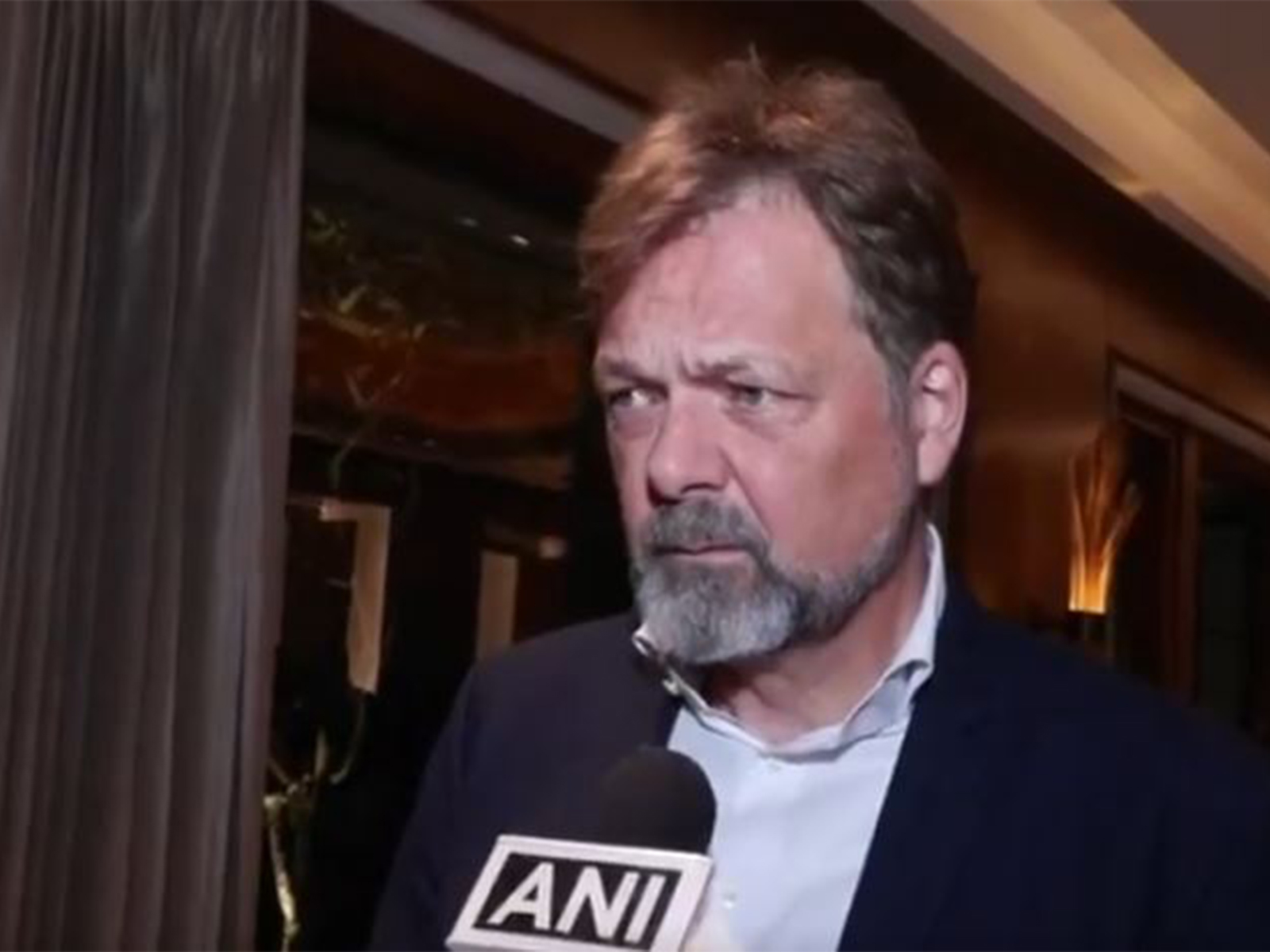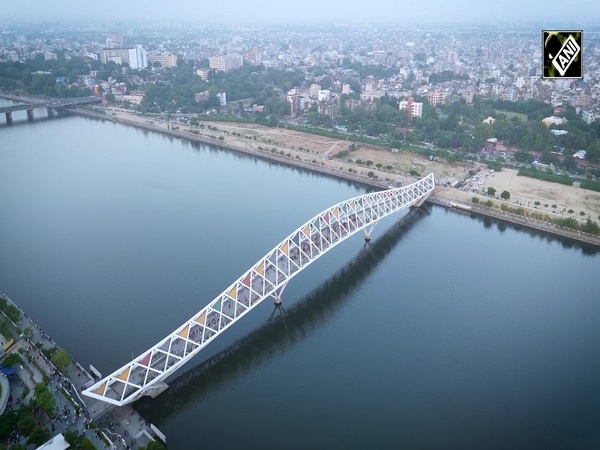PLA aims to roam the world
May 25, 2021

Hong Kong, May 25 : The year 2008 was a seminal one for the Chinese military, as in December the People's Liberation Army Navy (PLAN) dispatched a naval task force to the Gulf of Aden on what has turned out to be continuous presence. It was a watershed, as China proceeded to establish the first overseas military base in Djibouti and to begin roaming far more widely across the world's oceans.
Indeed, the PLA, at the behest of the Chinese government, is seeking to establish a global presence. By 2035, Chairman Xi Jinping wants the PLA to have basically completed its modernization. Certainly, one quality of a modern military, with the PLA being the world's largest, is the ability to efficiently deploy worldwide.
As part of that process, China will move from a mere regional power to one with a global military reach. Whereas China's hitherto aim has been to deter adversaries or to fight a high-intensity but short-duration battle on its periphery, now it is seeking the ability to conduct joint operations beyond the geography of East Asia.
Such aspirations will have startling implications, as it is inevitable that Beijing will seek to create new military or at lease dual-use bases, will pressurize or persuade countries into accepting a temporary or permanent Chinese military presence, and PLA ships and aircraft will turn up in unexpected places as part of military diplomacy and/or interventions in world hotspots.
The Institute for National Strategic Studies (INSS) of the National Defense University in the USA released a report this month entitled "PLA Overseas Operations in 2035: Inching towards a Global Combat Capability". The authors - Joel Wuthnow, Phillip C. Saunders and Ian Burns McCaslin - proffered two reasons why the PLA wants to operate far beyond China's borders.
The first reason: "The geographic focus of PLA combat missions could broaden as PLA power projection capabilities mature and state-based threats to perceived Chinese interests arise farther afield. The PLAN currently has the best ability to project and sustain power far from the Chinese mainland...but precision strikes jointly conducted by the navy, air force and Rocket Force would give Beijing new options to deter and retaliate against foes in other regions. PLA joint operations may also challenge potential US military interventions into East Asia by targeting US forces at greater distances from China."
"Second, protecting China's overseas interests may require coordination between multiple services and branches. Despite the PLA 'going out' in different ways in recent years, none of its overseas operations and few of its overseas exercises have been 'joint'. The PLA's evacuation of non-combatants from Libya in 2011 succeeded because of a relatively permissive environment: naval ships and air force transport aircraft could use host country facilities and were not subjected to terrorist or insurgent attacks. More complex and contested operations...may require capabilities from multiple services and extensive joint coordination."
China talks about distant regions areas as "far seas", which we can define as anywhere beyond the so-called Second Island Chain that stretches south from Japan through the Mariana Islands and Guam in the Pacific Ocean. Currently, the PLA's ability to perform complex joint operations in such areas is very limited. By comparison, the US has naval fleets active in just about every geographical region in the world, as well as forward-deployed forces that can quickly respond to a contingency.
However, it will not be easy for the PLA to achieve joint operations far from the mainland. The INSS report listed the following hindrances: a lack of a global combatant command system, limited strategic airlift and sealift, lack of a dense network of large overseas bases rooted in formal military alliances, and limited experience with foreign languages and cultures.
Interestingly, the PLA is a relative newcomer on the international arena. Ground forces began contributing to United Nations peacekeeping missions only in the 1980s. The PLAN only joined an international counter-piracy task force in 2008, and the PLAAF started over-water bomber training in 2015. A mechanized infantry company from the PLAN Marine Corps (PLANMC) has been in Djibouti since 2017.
The PLA is working hard to dispel some weaknesses, but others - such as a network of bases around the world - are the remit of China's diplomats. Most suitable for land-based expeditionary operations is the PLAAF's Airborne Corps, the PLANMC and army special forces, but they need air and/or sea transport.
What capability gaps are being filled? The PLA is busy inducting larger numbers of Y-20 transport aircraft that are able to lift 66-tonne payloads. Such long-range aircraft are essential for rapid movement of troops and equipment. Based on the Y-20, China has also been developing the Y-20U tanker that can refuel other aircraft in the air. It is rumored that the first Y-20U has now been handed over to an operational PLAAF unit, which could be the 38th Air Regiment of the 13th Transport Division based at Wuhan-Paozhuwan.
The PLAN is also fielding large logistics vessels that can support the long-range deployments of aircraft carrier and/or amphibious ship task forces.
The ability to conduct far-seas joint operations would enable the PLA to handle non-traditional and complex scenarios such as large-scale people evacuations, as well as boosting Chinese leaders' options for intervening in contingencies or punishing state actors. With Xi ordering the PLA to become a "world-class" military, this longer reach is non-negotiable.
Three possible scenarios whereby China might deploy troops overseas are delineated in the INSS report. One is military operations other than war (MOOTW), another is extended-range counter-intervention and a third is, ominously, overseas combat.
The first, MOOTW, is military speak for operations like non-combatant evacuations, disaster relief/humanitarian assistance, stabilization missions in permissive environments, and joint operations to protect sea lines of communication against pirates, terrorists or other threats.
China relies on shipping routes for trade, as well as conduits such as oil and gas pipeline, and these vulnerable lifelines must be protected. Offering swift assistance after a natural disaster is one way of gaining goodwill too, as happened after the 2004 Indian Ocean tsunami.
China is investing heavily in places like Africa and Asia, with more Chinese citizens living and opening businesses abroad. For example, in 2016 there were an estimated 40,000 Chinese enterprises operating overseas. Some of these fall under the Belt and Road Initiative umbrella, which operates in many unstable regions of the world. The 2019 Defense White Paper stated that "one of the missions of China's armed forces is to effectively protect the security and legitimate rights and interests of overseas Chinese people, organizations and institutions".
It is conceivable that China might one day rescue hostages or take down "terrorists" in foreign territory in the way that the USA did when it killed Osama bin Laden. China might even be invited by a struggling government to help restore order. It has an 8,000-strong peacekeeping force available for such an eventuality, though it would presumably seek authorization from organizations like the UN first.
Secondly, counter-intervention operations would most likely be directed at US and allied forces beyond the First Island Chain. India could be another target of such operations. With longer-range missiles, new strategic H-20 bombers on the way, more nuclear-powered submarines and longer-range aircraft, such action becomes more attainable. The PLA is becoming more adept as joint training occurs more frequently far from China's coast, and the USA is certainly taking seriously the PLA's burgeoning capabilities.
Regarding the third scenario of overseas combat, the authors concluded, "While the PLA of 2035 would probably be unable to conduct a major war beyond the First Island Chain, Beijing would have the capabilities to conduct limited joint combat operations against other countries. This would mark a significant shift from China's current policy of non-intervention, but several circumstances could make overseas combat more likely."
It posed three such reasons. "First, if significant Chinese interests were at risk and China was unable to leverage its economic or diplomatic power, Beijing might resort to military force to deter adversaries or deliver retaliatory strikes (for example, similar to 1986 US airstrikes against Libya...). Second, if Beijing abandons its traditional prohibition against military alliances, China might need to intervene on behalf of an ally. This possibility appears remote, but some influential Chinese thinkers have supported developing alliances to match a key US strength ... Third would be a shift from China's relatively restrained reform-era leadership to a more belligerent regime."
The PLA created five joint theater commands, but this cooperation has not necessarily filtered down to task forces operating overseas, which tend to be controlled by a single service. Thus, the PLA will need to modify its command-and-control hierarchy. Perhaps this could be by establishing a new global command, or, following the path of least resistance, allowing service headquarters to command far-seas operations.
A low percentage of Chinese troops have practical experience operating overseas. Indeed, joint expeditionary experience is virtually nonexistent. As an institution, then, the PLA has a long way to go to build up collective knowledge, alongside intensive training and doctrinal overhaul.
The PLA will definitely need to improve logistics, whether by carrying supplies wherever it goes (easier with a naval task force with Type 071 and Type 075 amphibious ships, for instance), employing platforms with greater endurance, or securing base access near areas of operation. The latter is a key weakness, but it would require China to diverge from its current principle of opposing military alliances. While the Joint Logistic Support Force could help, its chief focus is supporting theater commands within China.
Commercial vessels can help move equipment, and Beijing has a network of Chinese-owned or built port facilities. Russia sells a container-based Klub cruise missile system, and it remains possible that China could do the same. Cruise missiles installed in commercial shipping containers and carried aboard civilian vessels would be impossible to track, and they could be dispatched to or even pre-sited at trouble spots.
The INSS report concluded: "The PLA remains a regional military power but has made impressive strides toward a more effective global operational capability. By 2035 the PLA will likely be able to perform a wide range of MOOTW, including non-traditional security missions and limited strikes against non-state actors. It will also have a stronger ability to conduct joint counter-blockade and counter-intervention campaigns against the United States and to launch punitive strikes against distant state adversaries."
Limitations will remain, however. "...Counter-intervention operations at extended ranges and more complex joint strikes and raids would require substantial improvements to PLA capabilities and support systems, including a better-developed global command structure, increases in sealift and airlift assets, a stronger overseas joint logistics system, and revised doctrine and training programs to produce effective joint commanders."
One can debate what China's expeditionary capability will be by 2035, but it does depend on a matrix of variables, according to Wuthnow, Saunders and Burns McCaslin. The first is the evolution of the regional security environment. "If China remains focused on regional challenges such as Taiwan, North Korea and the Sino-Indian border dispute, there would be fewer resources available for higher-end MOOTW and joint combat operations in the far seas."
The second variable is Sino-US strategic competition. "Intensifying competition within the Indo-Pacific region could keep Beijing focused on preparing for military conflict with the United States. This could constrain forces available for joint operations elsewhere, but would also spur efforts to extend the scope of Chinese counter-intervention operations beyond the First Island Chain."
The third variable is China's economy. Beijing is investing heavily in the PLA, but additional power projection assets such as aircraft carriers are hugely expensive. "China's ability to produce, field and maintain large numbers of, in some cases, very expensive weapons and equipment assumes continuing Chinese economic growth." An economic downturn would seriously impinge upon such development plans.
The fourth variable concerns bureaucratic resistance within the PLA. "Major additional reforms to the command-and-control structure, logistics apparatus and assignment systems that would be required to enhance the PLA's ability to utilize joint force effectively in the far seas could encounter opposition from entrenched bureaucracies, including the services." Xi has steamrolled the PLA with deep reforms, but could his influence eventually wane?
The fifth variable is domestic stability within China. Serious domestic turmoil would mean the PLA focuses less on overseas missions. On the other hand, China could use the spurious excuse of "foreign interference" to conduct limited strikes abroad.
In summary, the USA's global military power will remain predominant in 2035. Nonetheless, China is eyeing a more ambitious global role, and none should discount the determination of China to achieve its goals. Of course, this assumes that China and the PLA do not move onto a different trajectory in coming years.



















